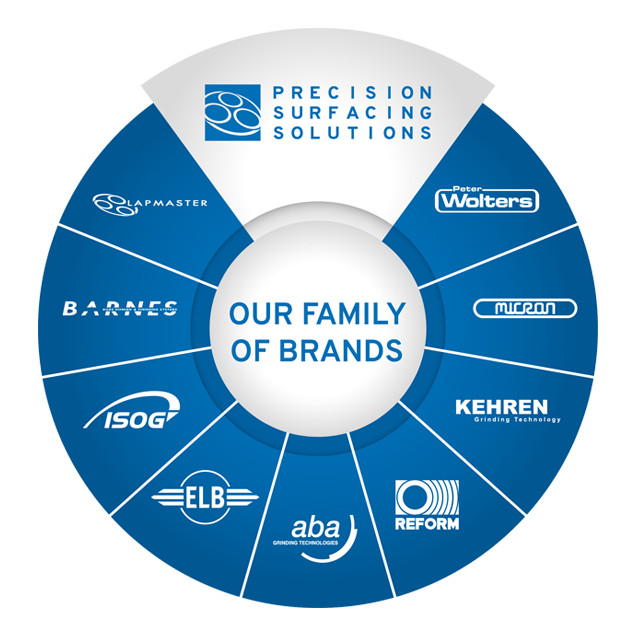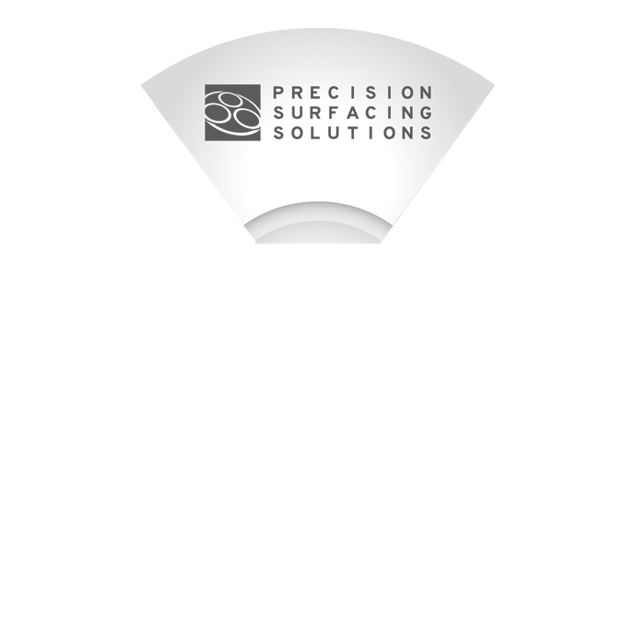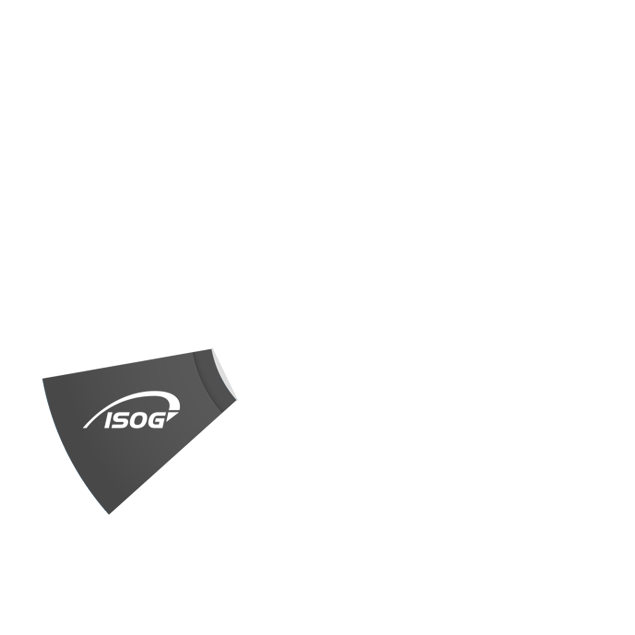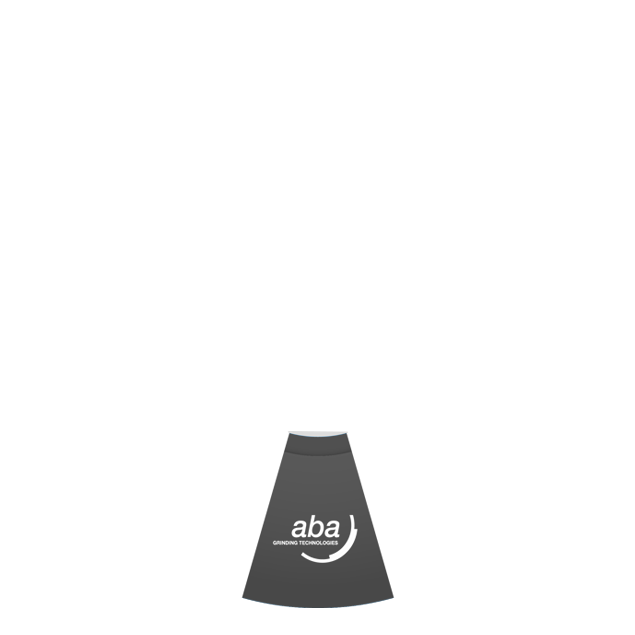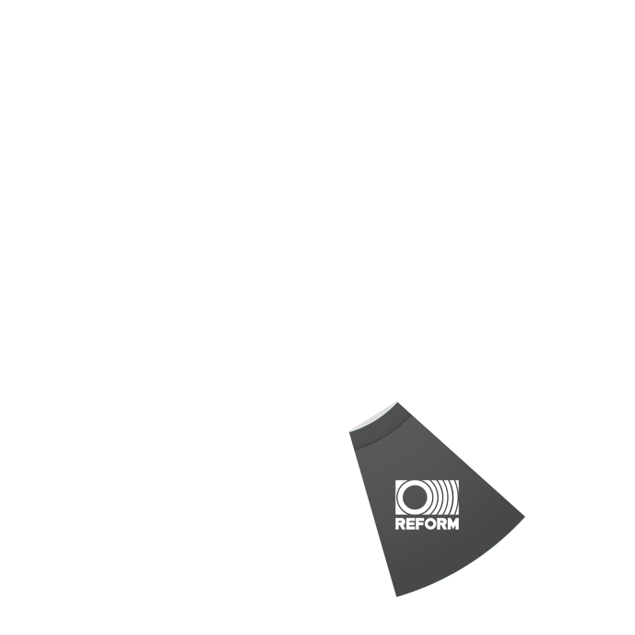Hand Lapping Plates / Polishing Kits

Lapmaster Wolters Hand Lapping Plates are ideal for research & development work and low volume production where extreme flatness is required. These plates are manufactured of dense, low porosity cast alloy to insure maximum cutting action, minimum plate wear, and consistent surface finish.
Cast Iron Hand Lapping/Polishing Plates
There are three sizes of grey cast iron, hand-lapping plates: 6” (152.4mm), 12” (304.8mm), and 18” (457.2mm) diameter. All sizes are available with either a cross-grooved surface or a solid surface. All plates are supplied with a one pound can of Lapmaster 1700 grade aluminum oxide, oil base lapping paste. A different micron size of aluminum oxide paste can be provided on request.
Hand lapping is performed commonly when the user doesn’t have enough lapping requirements to justify the purchase of a machine. Some firms that use lapping machines also have hand plates to accommodate odd abrasive sizes. Hand lapping is very labor intensive and it is best to maintain minimal stock allowances.
The cross-grooved hand lapping plate should always be quoted unless very small components will be processed and the grooves will interfere with the processing. Another reason for using the solid surface plate is for hand polishing techniques using diamond paste. Less micro scratching will be generated from a solid plate.
Proper technique for using hand-lapping/polishing plates
1. Select a lapping paste that contains an abrasive of the appropriate material type and micron size that will generate the desired surface roughness on the component. Lapmaster provides a one pound can of 1700 (14.5-micron particle size) grade aluminum oxide, petroleum base lapping paste with each plate. Other abrasive types and particle sizes are available on request; the price varies by abrasive and micron size.
2. If previously used, clean the top surface of the hand-lapping plate and measure its flatness to insure that it is flat enough to generate the required component flatness (All new hand-lap plates are lapped flat at the factory). A straight edge or flatness gauge can be used to perform the measurement.
3. Use a clean object or fingertip to apply small amounts of abrasive paste to the surface of the lapping plate. Do not apply too much paste. The paste can be spread evenly over the plate surface with a component or fingertips, a very thin even layer is desired.
4. Place the component requiring lapping on the plate and apply even pressure to the component with the fingertips or palm of the hand. Do not apply so much pressure that the component becomes distorted or the abrasive paste is completely wiped off the plate. Try to estimate three to five pounds of pressure per square inch of component contact surface. Depending on the component material, too much pressure can also cause the lapped surface to gall or smear.
5. Slide the component in a reciprocating “figure eight” (8) motion. The length of the reciprocation should approximate the diameter of the hand-lapping plate. After several strokes rotate the plate slightly to wear against different areas of the surface. Using the proper motion over the entire surface of the plate will help maintain its flatness for the maximum period of time before the plate will have to be re-lapped on a lapping machine. A groove or low area will be worn into the lap plate surface if components are lapped in one specific area. This low area will cause difficulty in achieving a flat component.
6.Continue to hand lap the component until its lapped surface is matte finished and free of the previously present machine tool marks.
7. When finished, clean the component with a petroleum solvent or other suitable cleaning product.
8. The hand-lap plate should be cleaned periodically to eliminate the build up of swarf. If the plate is cross-grooved the grooves must be cleaned and kept clear of swarf. This maintenance practice will cause the plate to provide better performance in the areas of higher stock removal, more consistent surface roughness and shorter process times.
9. The hand-lap plate is a precision tool that must be protected from damage and contamination. Cover the plate surface when not in use.
10. Periodically the hand-lap plate will be worn to an extent that prohibits the generation of precision flatness. A straight edge or flatness gauge can be used to measure the flatness of the plate to determine its condition. Should it be necessary to restore the hand-lap plate surface to its original condition, it must be lapped flat on a lapping machine or returned to Lapmaster. Lapmaster’s contract lapping department will provide the customer a price quotation for reconditioning the plate. The price is variable and will depend on the condition of the plate as received.
Lead Alloy Hand-Polishing Plate
Lapmaster Lead Alloy Lapping Polishing Plate
Lapmaster offers two sizes of this product, a 6” (152.4mm) and 12” (304.8mm) diameter. A ½” thickness of a lead, tin and antimony alloy is bonded to the surface of an aluminum base plate. Because this plate is used for polishing, the surface is solid and has been lapped flat. A one pound container of Lapmaster 2600 (17.5 micron particle size) grade silicon carbide abrasive powder and a steel hand-charging block is included.
This type of polishing plate is used specifically to hand-polish plastic and carbon graphite components. A certain degree of experience and skill is required to obtain optimum results.
Should it be necessary to restore the hand-polishing plate surface to its original condition, it must be lapped flat on a lapping machine or returned to Lapmaster. Lapmaster’ contract lapping department will provide the customer a price quotation for reconditioning the plate. The price is variable and will depend on the condition of the plate as received.
Proper technique for using lead alloy hand-lapping/polishing plates
1. If previously used, clean the top surface of the hand-polishing plate and measure its flatness (All new hand-polishing plates are lapped flat at the factory). A straight edge or flatness gauge can be used to perform the measurement. Use care to prevent damage to the soft lead alloy surface. This is done to insure that the polishing plate flatness is equivalent to the flatness of the lap plate that was used to lap the component prior to the polishing operation. In other words, the contour of the lapping and polishing plates must closely match. If the polishing plate flatness doesn’t match the lap plate flatness the component may start polishing only at its outer or inner perimeter. This condition will greatly increase the process time and the amount of stock that must be removed to polish the complete surface. The worst condition would be polishing a convex component on a convex plate. The only portion of the component in contact with the plate is the center and a large volume of material must be removed to generate a coplanar surface.
2.Using a clean utensil, distribute a very small amount of the Lapmaster 2600 silicon carbide abrasive over the entire surface of the plate.
3.Hold the flat surface of the charging block to the polishing plate surface, apply slight pressure while sliding the charging block over the entire surface area of the polishing plate. A reciprocating figure “8” motion is best to prolong the flatness accuracy of the polishing surface. During the charging process, periodically redistribute the loose abrasive powder as necessary to produce an evenly imbedded layer. Do not press hard enough to damage the soft lead surface. The purpose is to embed a layer of abrasive particles into the surface of the lead. This in effect will create a fixed abrasive polishing surface.
4.Brush all the loose abrasive from the plate.
5.Wet a clean shop rag or paper towel with alcohol and wipe the surface of the polishing plate to eliminate all remaining loose abrasive. If any loose abrasive remains on the plate surface, polishing will be inhibited and poor results will be obtained.
6.Place the component requiring polishing on the plate and evenly apply pressure to the component with the fingertips or palm of the hand. Do not apply so much pressure that the component becomes distorted or the plate surface is wiped and galled. Try to estimate three to five pounds of pressure per square inch of component contact surface.
7. Slide the component on the plate surface in a reciprocating figure “8” motion. The length of the reciprocation should approximate the diameter of the hand-polishing plate. After several strokes rotate the plate slightly to wear against different areas of the surface. Using the proper motion over the entire surface of the plate will help maintain its flatness for the maximum period of time before the plate will have to be re-lapped on a lapping machine.A groove or low area will be worn into the polishing plate surface if components are polished in one specific area. This low area will cause difficulty in maintaining a flat component.
8.The component should polish completely in approximately five to ten seconds. If this does not occur it will be necessary to repeat steps 2 through 5. As indicated in step one, if the plate flatness contour doesn’t match the component contour, the polishing action will occur only at the outside or inside diameter of the component. If this is the case either the polishing plate or the component will have to be re-lapped flat.
9.Clean the component when finished. Because this polishing technique is a “dry polish” the component will not require any liquid cleaning agent. The powder residue can be removed with a compressed air nozzle and/or very careful wiping with a soft cloth. Be cautioned that soft materials such as carbon graphite scratch extremely easily.
10.Periodically, as indicated by prolonged and increasing polishing process times, the plate must be wiped clean with a clean alcohol rag. Steps 2 through 5 can then be repeated to re-charge the plate surface with abrasive.
11.The hand-polishing plate is a precision tool that must be protected from damage and contamination. Cover the plate surface when not in use.
12.Periodically the hand-polishing plate will be worn to an extent that prohibits the maintenance of precision flatness. A straight edge or flatness gauge can be used to measure the flatness of the plate to determine its condition.
Ceramic Hand Polishing Plate
Lapmaster Ceramic Lapping Polishing Plate
Lapmaster offers white alumina ceramic hand polishing plates in 15/16” thickness and three diameter sizes: 6”, 9” and 12”. These plates are extremely hard and fragile. For this reason each plate is provided in velvet lined protective storage case. These plates have solid faces to help prevent scratches during polishing.
The ceramic polishing plate is generally used to polish ceramic components with diamond abrasive. Ceramic components can be successfully polished using a cast iron plate with diamond, but wherever there is a requirement to maintain a clean looking surface or to eliminate contamination of the component with cast iron, a ceramic plate must be utilized
Proper technique for using Ceramic hand-lapping/polishing plates
1. If previously used, clean the top surface of the hand-polishing plate and measure its flatness (All new hand-polishing plates are lapped flat at the factory). A straight edge or flatness gauge can be used to perform the measurement. Use care to prevent damage to the lapped surface.Flatness measurement is performed to insure that the polishing plate flatness is equivalent to the flatness of the lap plate that was used to lap the component prior to the polishing operation. In other words, the contour of the lapping and polishing plates must closely match. If the polishing plate flatness doesn’t match the lap plate flatness the component may start polishing only at its outer or inner perimeter. This condition will greatly increase the process time and the amount of stock that must be removed to polish the complete surface. The worst condition would be polishing a convex component on a convex plate. The only portion of the component in contact with the plate is the center and a large volume of material must be removed to generate a coplanar surface.
2. Apply to the surface of the ceramic plate a small quantity (1/32” cube) of oil or emulsion base diamond paste. The exact amount of diamond paste to apply will be determined by the size and surface area of the component to be polished as well as the polishing plate size. Spread an extremely thin, even layer of diamond paste over the polishing surface. Some users of this type of plate will also use a metal printers ink roller to roll the diamond layer to embed diamond particles into the ceramic polishing surface.
3.Using a clean fingertip, moisten the polishing plate surface with a very small volume of oil base diamond lubricant.
4. Place the component requiring polishing on the plate and evenly apply pressure to the component with the fingertips or palm of the hand. Do not apply so much pressure that the component becomes distorted or the plate surface is wiped and galled. Try to estimate five to ten pounds of pressure per square inch of component contact surface.
5.Slide the component on the plate surface in a reciprocating figure “8” motion. The length of the reciprocation should approximate the diameter of the hand-polishing plate. After several strokes rotate the plate slightly to wear against different areas of the surface. Using the proper motion over the entire surface of the plate will help maintain its flatness for the maximum period of time before the plate will have to be re-lapped on a lapping machine.A groove or low area will be worn into the polishing plate surface if components are polished in one specific area. This low area will cause difficulty in maintaining a flat component.
6.The polishing plate surface should become drier and produce higher friction as polishing is performed and the volatile portion of the lubricant evaporates. This condition is ideal for the generation of a quality polish. Periodically it will be necessary to limit the friction by re-moistening the polishing plate surface with diamond lubricant.
7.The component should polish evenly across its surface. If this does not occur the polishing plate flatness contour doesn’t match the component contour, the polishing action will occur only at the outside or inside diameter of the component. If this is the case either the polishing plate or the component will have to be re-lapped flat.
8.Clean the component when finished. Be careful to not damage the polished surface.As the operator accumulates experience and knowledge, modifications and refinements to the above general process will be made to achieve optimal results.
9.Periodically, as indicated by prolonged and increasing polishing process times, the plate must be cleaned to remove all residues. Steps 2 and 3 can then be repeated to re-charge the plate surface with diamond abrasive.
10. The hand-polishing plate is a precision tool that must be protected from damage and contamination. Cover the plate surface when not in use.
11. Periodically the hand-polishing plate will be worn to an extent that prohibits the maintenance of precision flatness. A straight edge or flatness gauge can be used to measure the flatness of the plate to determine its condition.
Iron Hand Lapping and XP Hand Polishing Kits
Lapmaster Iron/ XP Lapping Polishing Plate
These kits offer a more portable diamond-processing alternative to the previously listed hand processing products. Almost any material can be diamond processed on plates. Both kits are complete with a wooden protective carrying case, concentric grooved 348 mm (13.7”) diameter plate, ten grams of diamond paste and a 500 ml trigger spray bottle of diamond lubricant.
The Iron hand lapping kit should be used for stock removal applications due to its harder composition and supply of 25-micron size diamond paste. The XP kit is intended for precise polishing applications due to its much softer composition and supply of 3-micron size diamond paste.
The same procedure used with the previously described ceramic hand polishing kit can be used with the hand processing kits.
Proper technique for using Iron Hand Lapping and XP Hand Polishing Kits
1. If previously used, clean the top surface of the hand-polishing plate and measure its flatness (All new hand-polishing plates are lapped flat at the factory). A straight edge or flatness gauge can be used to perform the measurement. Use care to prevent damage to the lapped surface.Flatness measurement is performed to insure that the polishing plate flatness is equivalent to the flatness of the lap plate that was used to lap the component prior to the polishing operation. In other words, the contour of the lapping and polishing plates must closely match. If the polishing plate flatness doesn’t match the lap plate flatness the component may start polishing only at its outer or inner perimeter. This condition will greatly increase the process time and the amount of stock that must be removed to polish the complete surface. The worst condition would be polishing a convex component on a convex plate. The only portion of the component in contact with the plate is the center and a large volume of material must be removed to generate a coplanar surface.
2. Apply to the surface of the ceramic plate a small quantity (1/32” cube) of oil or emulsion base diamond paste. The exact amount of diamond paste to apply will be determined by the size and surface area of the component to be polished as well as the polishing plate size. Spread an extremely thin, even layer of diamond paste over the polishing surface. Some users of this type of plate will also use a metal printers ink roller to roll the diamond layer to embed diamond particles into the ceramic polishing surface.
3.Using a clean fingertip, moisten the polishing plate surface with a very small volume of oil base diamond lubricant.
4. Place the component requiring polishing on the plate and evenly apply pressure to the component with the fingertips or palm of the hand. Do not apply so much pressure that the component becomes distorted or the plate surface is wiped and galled. Try to estimate five to ten pounds of pressure per square inch of component contact surface.
5.Slide the component on the plate surface in a reciprocating figure “8” motion. The length of the reciprocation should approximate the diameter of the hand-polishing plate. After several strokes rotate the plate slightly to wear against different areas of the surface. Using the proper motion over the entire surface of the plate will help maintain its flatness for the maximum period of time before the plate will have to be re-lapped on a lapping machine.A groove or low area will be worn into the polishing plate surface if components are polished in one specific area. This low area will cause difficulty in maintaining a flat component.
6.The polishing plate surface should become drier and produce higher friction as polishing is performed and the volatile portion of the lubricant evaporates. This condition is ideal for the generation of a quality polish. Periodically it will be necessary to limit the friction by re-moistening the polishing plate surface with diamond lubricant.
7.The component should polish evenly across its surface. If this does not occur the polishing plate flatness contour doesn’t match the component contour, the polishing action will occur only at the outside or inside diameter of the component. If this is the case either the polishing plate or the component will have to be re-lapped flat.
8.Clean the component when finished. Be careful to not damage the polished surface.As the operator accumulates experience and knowledge, modifications and refinements to the above general process will be made to achieve optimal results.
9.Periodically, as indicated by prolonged and increasing polishing process times, the plate must be cleaned to remove all residues. Steps 2 and 3 can then be repeated to re-charge the plate surface with diamond abrasive.
10. The hand-polishing plate is a precision tool that must be protected from damage and contamination. Cover the plate surface when not in use.
11. Periodically the hand-polishing plate will be worn to an extent that prohibits the maintenance of precision flatness. A straight edge or flatness gauge can be used to measure the flatness of the plate to determine its condition.




